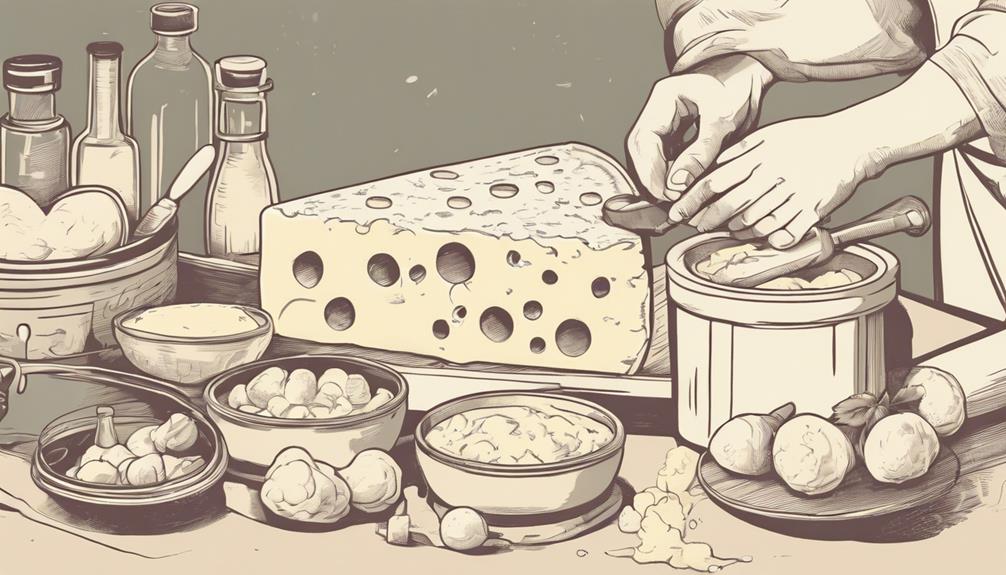How To Become More Self-Sufficient Without Starting a Full-Blown Farm…
Want to start preserving your harvest, making your own soap, or building a backyard root cellar — but not sure where to begin? “Homesteading Advice” gives you instant lifetime access to 35+ practical homesteading books on food preservation, veggie gardening, DIY natural cleaning products (save over $250 per year with this skill alone), brewing, off-grid energy, and a whole lot more…
Click Here To Check It Out Now!
“I’ve been experimenting with cheese making for a few months now and I’m curious about how handling curds differently can affect the texture of the final product. I want to make sure I’m using the right techniques to achieve the specific textures for cheeses I’m trying to create. Could you explain the different methods and why they matter for various cheese types? Also, if possible, can you give some tips on detecting the correct curd consistency before moving on to the next step?” Thanks, Kimberly, Seattle, USA.
What Are The Differences In Curd Handling For Different Cheese Textures?
Hey Kimberly! Cheese making is such a rewarding process, isn’t it? Let’s talk about how different curd handling techniques can drastically change the texture of your cheese. This factor alone can turn your curd into anything from a creamy, spreadable cheese to a firm, sliceable one. Handling the curds properly ensures that you achieve the desired texture for each kind of cheese.
The Basics of Curd Formation
To start, let’s understand how curds are formed. Rennet and acidity work together to coagulate milk, separating it into curds (solid part) and whey (liquid part). The method of cutting, cooking, stirring, and salting these curds will influence the texture of the final cheese.
Different Curd Handling Techniques and Their Impact
1. Soft Cheeses
Examples: Brie, Camembert, Cottage Cheese
For soft cheeses like Brie or Cottage cheese, curds must be treated delicately to retain moisture and a creamy texture.
- Cutting the Curds: Generally, cut into large pieces to ensure less whey drainage. Smaller cuts increase surface area, causing more whey loss and a denser cheese.
- Stirring: Minimal stirring to prevent moisture loss. More stirring leads to firmer cheeses.
- Heating: Little to no heating after curds are cut. High temperatures drive out moisture, making the cheese firmer.
- Time: Short resting times post-cutting. The longer curds sit, the more whey they lose, resulting in a denser texture.
2. Semi-Soft Cheeses
Examples: Havarti, Monterey Jack
Semi-soft cheeses require a moderate approach, balancing moisture retention and whey expulsion.
- Cutting: Medium-sized curd cuts help balance whey expulsion and moisture retention.
- Stirring: Gentle and periodic stirring helps achieve a balanced texture, avoiding excessive moisture loss.
- Heating: Moderate heating will firm up the curds slightly but not too much. Maintain temperatures around 100–105°F.
- Time: Allow curds to rest and settle for a medium period. This balance helps achieve the desired semi-soft texture.
3. Hard Cheeses
Examples: Cheddar, Parmesan, Gruyère
Hard cheeses require more rigorous handling to expel as much whey as possible for a dense, sliceable texture.
- Cutting: Small curd cuts increase surface area, encouraging thorough whey drainage.
- Stirring: Vigorous and consistent stirring ensures even moisture loss, leading to a firm texture.
- Heating: Higher temperatures, often up to 130°F, help expel further whey from the curds.
- Time: Allowing curds to rest longer before pressing ensures a significant whey expulsion, ensuring dense texture.
4. Blue Cheeses
Examples: Roquefort, Gorgonzola, Stilton
Blue cheeses need specific handling to encourage mold development while achieving the right texture.
- Cutting: Medium-sized cuts to find a balance between firm and soft curds, allowing air pockets for mold growth.
- Stirring: Gentle stirring to prevent curd compaction and encourage mold-friendly air pockets.
- Heating: Mild heating, helping to expel some whey but preserving a creamy consistency.
- Time: Moderately short resting time to retain some moisture, ensuring the cheese isn’t too hard or too soft.
Detecting the Right Curd Consistency
Here are a few tips to help you judge when it’s time to move on to the next step:
- Clean Break Test: Dip a finger into the curds and lift. If the curd breaks cleanly, it’s ready. A gooey or milky texture means it needs more time.
- Curd Size: For soft cheeses, curds should be roughly the size of large peas. For hard cheeses, cut them smaller, about the size of rice grains.
- Firmness: Gently press the curds against the side of the pot. If they feel springy but firm, they are ready. Too soft means they aren’t done yet.
- Whey Clarity: The whey should be clearer and greenish. Milky whey indicates that curds need more time to set.
Final Thoughts…
Kimberly, understanding how to handle curds based on the type of cheese you wish to create is vital in achieving the perfect texture. Whether aiming for a creamy Brie or a sharp Cheddar, the steps of cutting, stirring, and heating curds play significant roles. Watch for those tell-tale signs in curd consistency to master your cheese-making ventures.
Keep experimenting, and thanks for bringing such a thoughtful question! Happy cheese making in Seattle!

